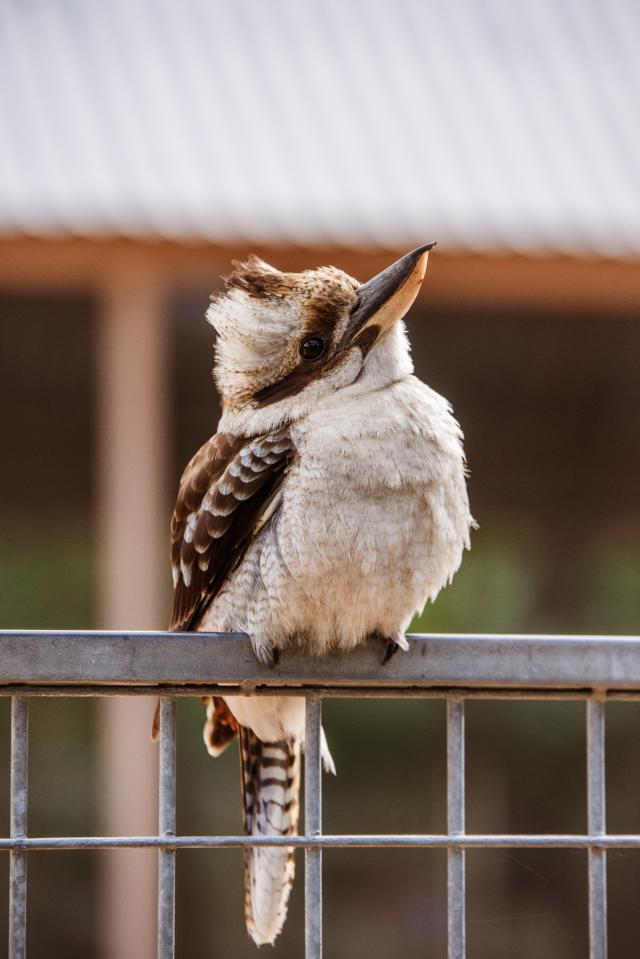
By Gabriella Vukman
Among the distinctive buzz of cicadas and hooting Kookaburra laughter, Australia’s favourite animal sounds can be heard in our very own Valley.
The ABC’s recent poll determining Australia’s favourite animal sounds received a whopping 120,000 votes, confirming the Magpie as the winner on 18 August.
Here is a guide on where you can find and hear some of the top 10 finalists in our very own Valley.
The Kookaburra
Landing in the poll’s top 10, the kookookaaakaakaa of the notorious nursery rhyme bird is a prominent feature in day-to-day Valley life. Communicating territory, the calls of the kookaburra can most often be heard at dusk and dawn.
These cheeky birds have been known to hang around barbecues, stealing sausages from barbecues and right out of the hands of people.
Local birding expert Chris Doughty said “they don’t just eat them, they kill them first. They think it’s a snake so they bang it on the branch and then eat it.”
Kookaburras nest in hollows off the ground, so between September and January, don’t forget to look up into the treeline for some fluffy baby Kookas.
Feeding on insects, fish and lizards, this feathered favourite is also not afraid to snack on a poisonous snake for dessert!
The Banjo or ‘Pobblebonk’ Frog
Known for its babbling ‘bonk, bonk’ sound, the little Pobblebonk Frog or Banjo Frog can be heard bonking during its mating season in spring.
The name ‘Banjo Frog’ stems from the similarity of the frog’s bonk call to the plucking of a banjo string.
The males take turns bellowing their bonks in the hope of attracting a mate.
Local environmental consultant David De Angelis sheds some light on the Banjo Frog, asserting that the frog only generates “a single note at a time”. This means that the ‘pobblebonk’ call, made up of three ‘bonks’ is actually “three individual calls” from different frogs, in rapid succession.
These guys like to burrow and can be spotted in your compost.
“People often dig them up in the garden,” David said.
Further, a soothing, springtime stroll along the slow-flowing parts of the little Yarra River can also serve as an excellent opportunity to hear and spot the Banjo Frog.
David notes that you can differentiate between the pobblebonks found in Melbourne and those found in the Upper Yarra Valley. Make sure to look out for the “thin white stripe or line along the middle of the back,” David said.
The Butcherbird
The Butcherbird yields its name from the manner in which it kills its prey, leaving it skewered on twigs to save for later.
“They’ll kill something, say a beetle, and they’ll put it on a thorn in a bush and leave it as sort of a larder to come back to,” Chris said.
This bird elicits a raving and melodious trill and is common throughout Victoria, including the suburbs. You can even find Butcherbirds in your backyard.
Chris goes on to claim that the Butcherbird “probably has the prettiest song in Melbourne”
The Black Cockatoo
The startling screech of the black cockatoo also echoes throughout the Valley. These dark beauties are endangered with two of the five species thought to become extinct in the wild.
The community needs to make active changes such as reducing deforestation and the use of pesticides to ensure that the alarming and impromptu squawk of the Black cockatoo will be heard by future Australians.
The Lyrebird
Last but not least is the mysterious lyrebird, a historical phenomenon that mimics the sounds of the bush and sometimes even human life around them. Incredibly shy and relatively large, the lyrebird likes to lurk in heavily forested areas and can be spotted in the Cathedral Ranges and Sherbrooke forest.
The lyrebird doesn’t fool everyone with its calls however. Chris Doughty said, “you can tell it’s a lyrebird because it’s far too loud.”
Chris notes that Lyrebirds have “some of the largest lungs of any bird in the world”.
Startling and confusing the creatures around it with random and varying calls, the lyrebird uses its vocal repertoire to lure a mate. These calls are heard during the breeding season.
Chris posited that the call is territorial and said it is also “to let other males know that that territory is occupied.”
“They breed in the middle of winter which is very unusual,” Chris said.
The Guurguurr or Boobook bird, whipbird, magpie, summer cicadas and fairy wren also made it into the poll’s top 10, reflecting the diversity in Aussie bush sound favourites.
Which animal sound is your favourite?






